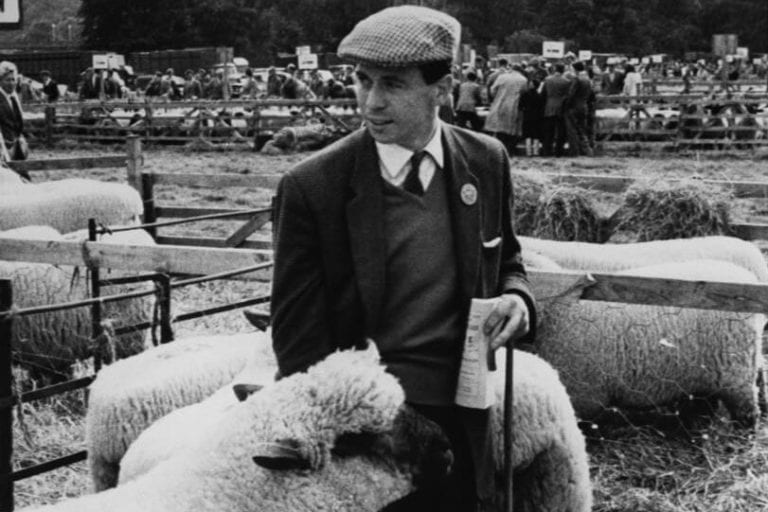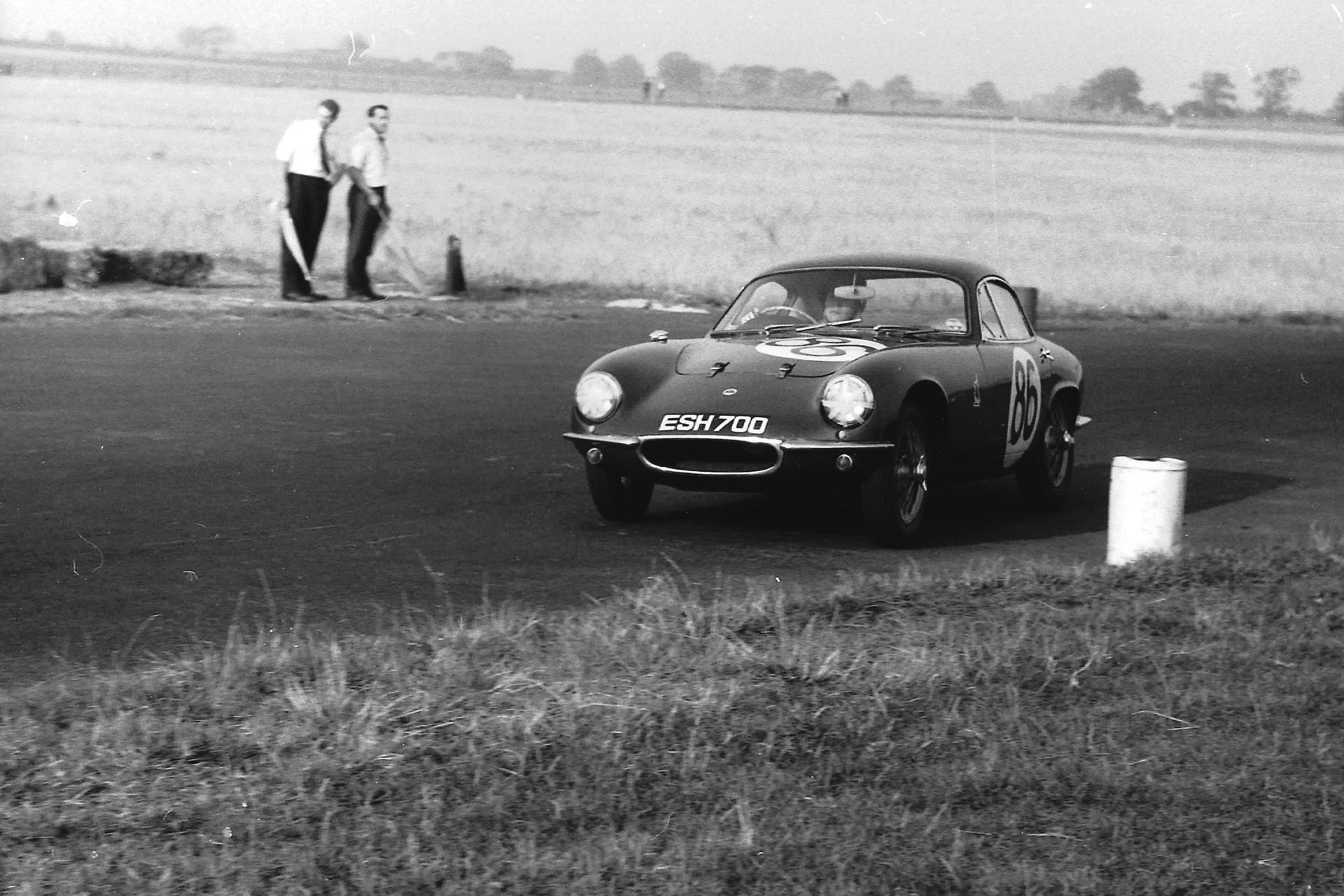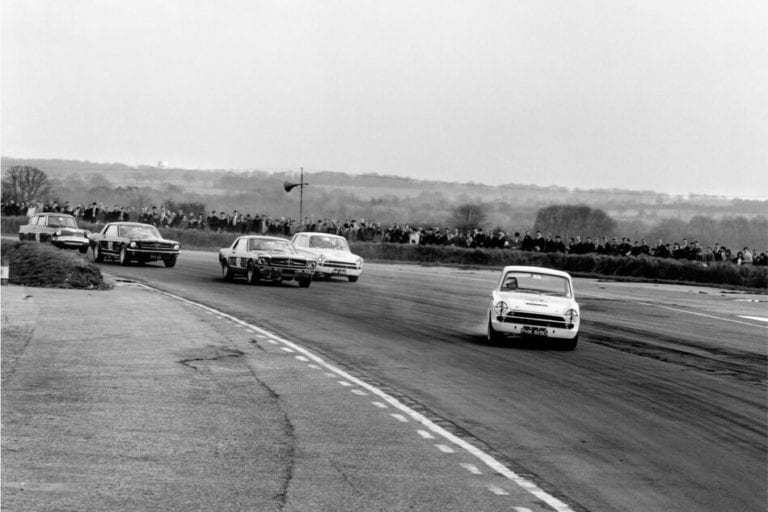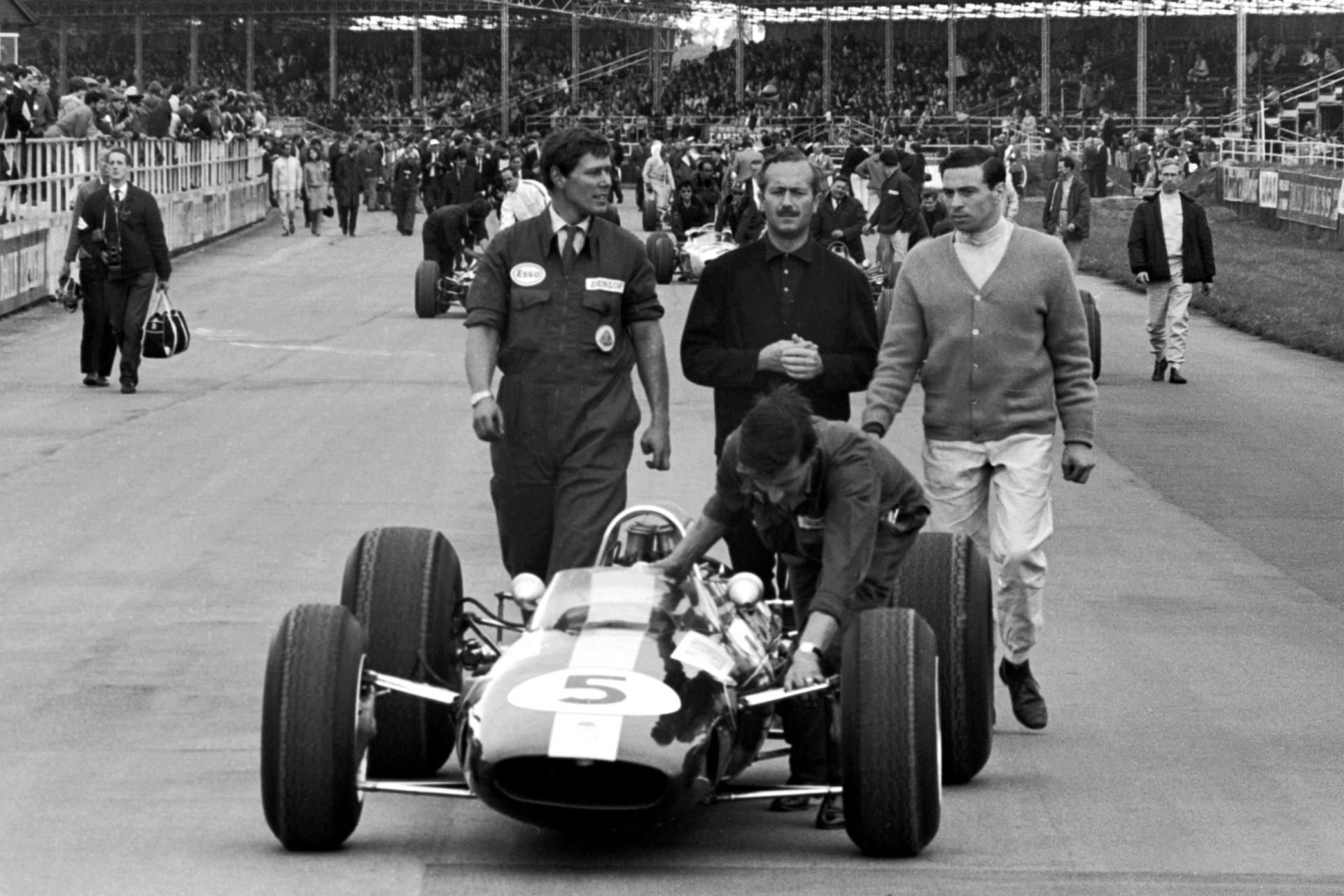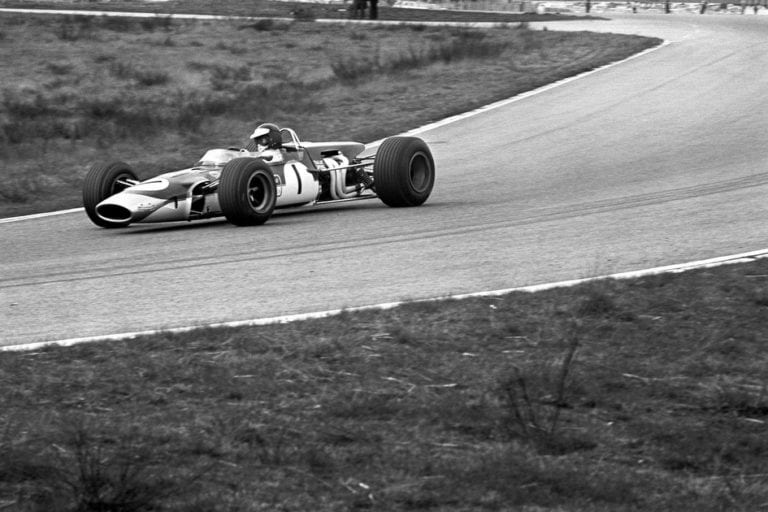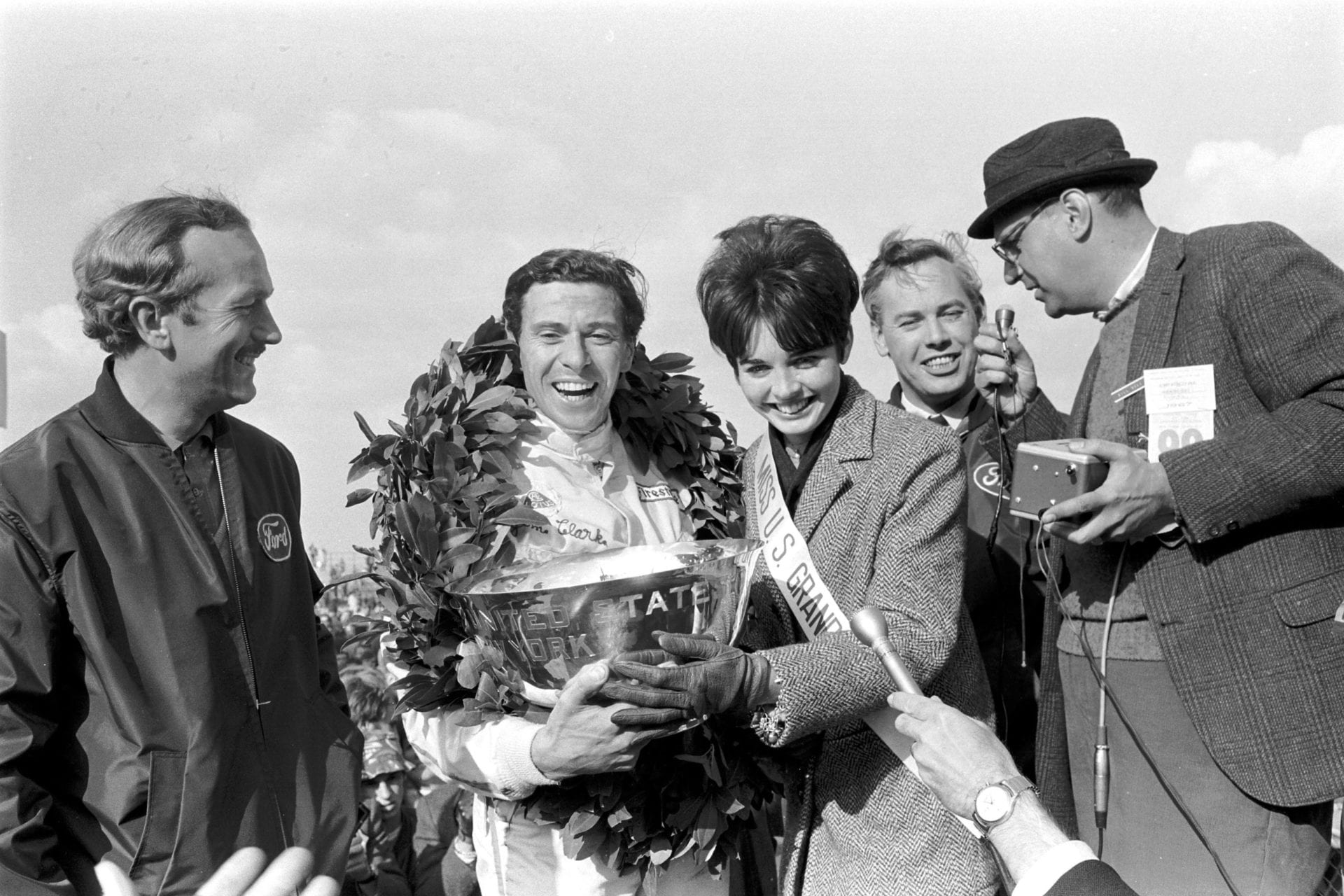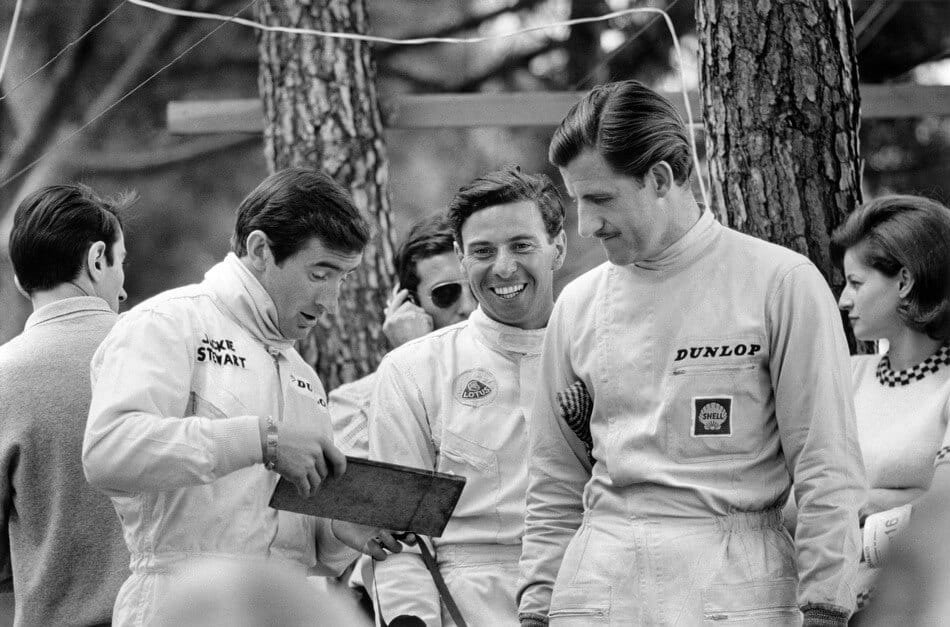
The Early Years
Jim Clark OBE was born James Clark Junior on the 4th March 1936 in Kilmany, Fife. The son of a sheep farmer, he was the youngest son of the family with four older sisters, Mattie, Susan, Isobel and Betty. When he was 6 years old, his parents James and Helen, moved the family south to Edington Mains farm just outside the rural hillside village of Chirnside, Berwickshire in the Scottish Borders and he became a proud Borderer for the rest of his life…
Young Farmers
Part and parcel of the Borders Farming life, as a youngster was to join the Ednam Young Farmers Club. Jim joined and quickly became well acquainted and good friends with Ian Scott-Watson who bought his attention to motorsport. In 1953 Jim acquired he obtained his full drivers license and was introduced by Scott-Watson to Berwick & District Motor Club. Although he did not yet know it, he was about to be steered towards his future career. Close to Edington Mains was Winfield Airfield, home to the first ever Scottish motor race meeting, where at an early age Jim had witnessed the Ecurie Ecosse team testing Jaguars who famously won Le Mans in 1956 and 1957. Another race track was created close by at the Charterhall Airfield in 1952 and be graced by a who’s who or motor racing through to the 1960’s, including Moss, Hawthorn, Salvadori, Farina, Abecassis, Parnell, Stewart and of course Jim Clark…
The Border Reivers
This victory created the formation of the Border Reivers team, with Jock McBain who owned a local garage in Chirnside, Alec Calder Jim’s brother in law, Scott-Watson as secretary and Jim the main driver. McBain, Calder and Scott-Watson was also instrumental in organising motor racing events at the race tracks of Winfield and Charterhall where Jim would hone his natural talent. Less than a year later Jim set the record at Full Sutton in April 1958, as being the first driver to average over 100mph in a British sports car race in a Jaguar D-Type…
Lotus Grand Prix Team
From 1961 onwards Jim was a fixture in the Lotus Grand Prix team under team boss Colin Chapman and by the end of the season he was their main driver. Jim won the non-championship race at Pau that year and achieved 2 further podiums in Zandvoort and Reims finishing 3rd on both occasions. In 1962 Jim so nearly tasted championship success. Chapman introduced the Lotus 25 with its revolutionary monocoque chassis. Clark won three Grand Prix- Belgium, British and French, finishing 2nd in the Championship to team-mate Graham Hill after Clark retired on lap 62/82 the final race of the season in South Africa due to an oil leak…
Tragedy
Motorsport in the early days of Formula 1 was unfortunately inherently dangerous. Jim was involved in several spectacular accidents during his career, but had never suffered serious injury until 1968. Tragically on 7 April Jim was competing in a Formula 2 at a wet Hockenheim during a break in the Formula 1 season, when his Lotus 48 in Gold Leaf livery left the track at over 150 mph, somersaulted and collided with a tree killing him at the age of 32. There were no witnesses. Time suddenly stood still…
Legacy
Jim Clark’s tragic death at Hockenheim in 1968 stunned the world and in terrible circumstances helped redefine the future of Formula 1 with a greater emphasis on safety led by his close friend Sir Jackie Stewart, the Trust’s Honorary President. Jim’s death signalled the beginning of the end of the ‘amateur’ era, although many more racing drivers would die before improvements in race car construction and track design with run off areas, guard rails and gravel traps. Formula 1 was changing with the introduction of advertising and sponsorship…
Racing Statistics
- Formula 1 World Champion 1963 +1965 (Runner up in 1962).
- Formula 1 Races: 72, Wins: 25, Pole Positions: 33
- Formula 1 Grand Slams: 8 Pole, Win, Fastest Lap, led every Lap
- Le Mans 24 Hour 1960: 3rd
- Indianapolis 500 Champion 1965 (Runner up in 1963 + 1966).
- British Touring Car Champion 1964
- Tasman Series Champion 1965, 1967 and 1968.
- Formula 2 Champion 1965

